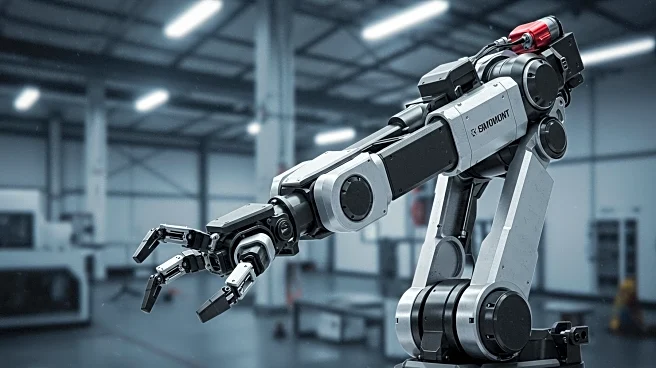What's Happening?
The North American robotics industry has shown improvement in the first half of 2025, according to the Association for Advancing Automation (A3). The industry saw a 4.3% increase in robot orders and a 7.5% rise in revenue compared to the same period in 2024. Automotive Original Equipment Manufacturers (OEMs) led the growth with a 34% year-over-year increase in units ordered. Despite geopolitical and economic challenges that slowed sales in 2024, the first quarter of 2025 showed a 0.4% increase in units ordered and a 15% rise in order value compared to Q1 2024. The non-automotive sector took the lead in Q2, accounting for 56% of total units ordered, reflecting the expanding role of automation in industries such as life sciences and electronics.
Why It's Important?
The steady growth in the North American robotics industry highlights the increasing importance of automation in various sectors. Automotive OEMs continue to drive significant demand, indicating a robust recovery and investment in automation technologies. The rise in non-automotive orders suggests a diversification of automation applications, particularly in life sciences and electronics, which are crucial for operational efficiency and resilience. This trend is vital for businesses aiming to remain competitive in a rapidly changing global market, addressing labor shortages and reshoring efforts. The growth in collaborative robots, designed to work alongside humans, further emphasizes the shift towards flexible and adaptive automation solutions.
What's Next?
If current growth patterns persist, the North American robotics market could surpass 2024 levels by mid-single digit growth rates by the end of the year. A3 plans to expand its reporting to include sector-specific growth trends, particularly for collaborative robots. The organization will continue to offer market intelligence through its MI+ platform, providing forecasts and analyses to its members. Upcoming industry events hosted by A3, such as the Humanoid Robot Forum and the International Robot Safety Conference, will further explore advancements in robotics and automation.
Beyond the Headlines
The increasing adoption of collaborative robots, which accounted for 23.7% of all units ordered in Q2, reflects a shift towards automation solutions that prioritize human-robot interaction. This trend could lead to significant changes in workplace dynamics, emphasizing safety and efficiency in environments where space and labor are constrained. As automation becomes central to business strategies, companies may focus on building resilience and flexibility to navigate economic uncertainties.















